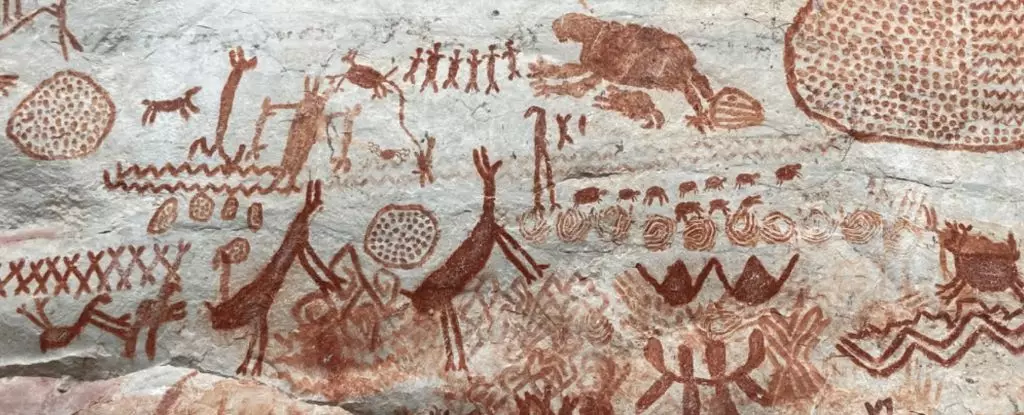Nestled in the vibrant Amazon, the Serranía De La Lindosa in Colombia is a treasure trove of rock art that encapsulates the spiritual beliefs and ecological narratives of the Indigenous peoples of the region. Recent collaborative efforts between Colombian and UK researchers, along with the invaluable support from Indigenous elders and ritual specialists, have resulted in the documentation of a staggering array of motifs. Political unrest and geographical hurdles had long hampered access to these sacred sites, leaving them obscured for nearly a century. Now, through renewed exploration, tens of thousands of images have emerged, reflecting a rich tapestry of cultural history that intertwines the observable world with the supernatural.
These rock paintings, some estimated to date back over 11,000 years, include diverse motifs such as human figures, animals, plants, and intricate geometric patterns. What makes these works particularly extraordinary is the connection between the motifs and the oral traditions of the Indigenous groups. University of Exeter archaeologist Jamie Hampson notes the unparalleled alignment between the narratives shared by Indigenous communities and the artistic expressions found on the rock walls, a convergence rarely seen in anthropological studies across the globe.
The paintings aren’t simple depictions of daily life or representations of surrounding flora and fauna; they are integral parts of the ritualistic practices and spiritual beliefs held by the Indigenous peoples. Insight from elders reveals that these symbols signify engagements with the spirit realm and the intricate negotiations required to maintain harmony and balance in the natural world. The transformative power reflected in the images—where humans morph into animals or hybrids of both—serves as a profound commentary on the interconnectedness of existence.
For instance, Tukano-speaker Ismael Sierra shares insights into scenes on the rocks, describing them as representations of a dual existence—one that transcends the physical and merges with the spiritual. Such narratives evoke a primal respect for nature, illustrating how every creature and plant is imbued with meaning that goes beyond their mere physicality. This notion resonates deeply within Amazonian cultures, where forest spirits are believed to protect wildlife, forging a delicate alliance between humans and their environment.
Art as a Vehicle for Cultural Heritage
The art of Serranía De La Lindosa acts as a bridge, allowing generations of Indigenous people to weave their narratives and spiritual beliefs into tangible forms. This connection between the art and its cultural significance is crucial, especially in an era where Indigenous art often risks becoming disassociated from the societies that birthed it. The artworks encapsulate not only aesthetic value but serve as vital records of ancestral beliefs, challenges, and relationships with the ecosystem.
Hampson emphasizes the transformative potential of these collaborations with Indigenous communities, allowing researchers to glean authentic interpretations and meanings behind the motifs. This invaluable insight ensures that future explorations of the art are framed within the context of the animistic cosmology that informs Indigenous worldviews, enriching our understanding and appreciation of these sacred expressions.
Amid these revelations, there is an urgent call to action regarding the future of the rock art. As political strife continues to force many Indigenous peoples away from their ancestral lands, experts like Ismael Sierra express deep concern for the preservation of these historical artworks. The question remains: who will carry the torch for these cultural artifacts when those who created and maintained them are displaced?
The plight of the Indigenous communities in Colombia is emblematic of a broader global concern over the erasure of Indigenous narratives. This situation underscores the significance of documenting and preserving not merely the visual aspect of the art but also the accompanying stories and rituals that breathe life into it. As scholars, researchers, and activists work towards safeguarding this heritage, it is crucial to recognize and validate the voices of those who hold the keys to understanding their artistic expressions.
The rock art of Serranía De La Lindosa provides profound insights into the spiritual and ecological relationships that define Amazonian Indigenous cultures. The collaboration between researchers and Indigenous elders represents a vital step towards protecting this legacy and ensuring that these ancient beliefs continue to resonate for generations to come.

Leave a Reply